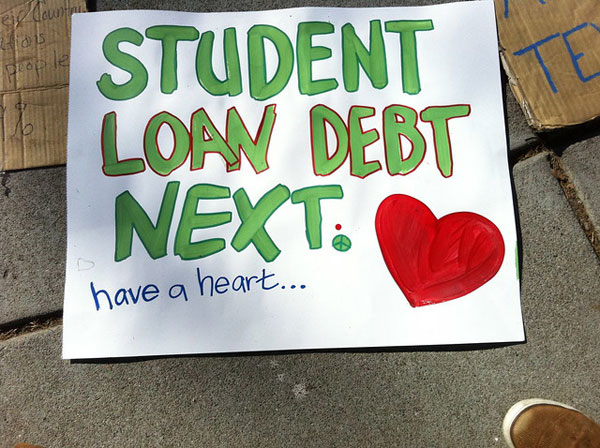
May 7, 2019; Wall Street Journal
Last October, NPQ covered the Public Service Loan Forgiveness (PSLF) program and noted that of the first 19,321 applications submitted for loan forgiveness, a grand total of 55 passed muster. Those numbers came out last year from a Government Accountability Office (GAO) report and were based on requests submitted as of April 2018.
According to Michelle Hackman of the Wall Street Journal, data is now available through March 2019 and the numbers are…not much better.
As Hackman writes, “More than 73,000 people have applied for debt forgiveness as of March 31 of this year, according to Education Department data, but just 864 have had their loans erased.”
While the odds of getting loan forgiveness approved have quadrupled—from 0.3 percent to 1.2 percent—it’s no surprise the other 98.8 percent are none too pleased.
Back in 2016, an article in NPQ by Nancy Berlin and colleagues at CalNonprofits extolled the benefits of the PSLF program:
The federal government offers a program that makes staying in the public sector easier: Public Service Loan Forgiveness. PSLF eliminates your debt after 10 years of payments. Shockingly few people know about this program (see the chart below) but it can bring life-changing debt relief to thousands of nonprofit employees—and it’s also a great recruiting tool for nonprofit executive directors and HR managers.
[…]
In a nutshell, the PSLF is a federal program from the Department of Education that helps nonprofit staff with student debt stay in the sector by forgiving the balance of their student loans after 10 years of payments. Since 120 qualifying payments must be made on eligible federal student loans after October 1, 2007, the first applications for debt relief will be accepted in October of 2017.
Sign up for our free newsletters
Subscribe to NPQ's newsletters to have our top stories delivered directly to your inbox.
By signing up, you agree to our privacy policy and terms of use, and to receive messages from NPQ and our partners.
One can understand the enthusiasm. Clearly, having debt written off after 10 years would be life-changing, if implemented. Instead, it’s been a bureaucratic nightmare. Tripwires are almost everywhere. As Hackman explains, to be eligible for forgiveness, a borrower “must work for a government entity or nonprofit, hold a certain type of loan, enroll in one of several specific repayment plans and make 120 full and on-time monthly payments, or 10 years’ worth. Falling short on almost any of these requirements can mean disqualification.” Hackman adds that “antipathy from conservatives—particularly in the Trump administration—who would prefer the program had never been created” have exacerbated this.
Rejections occur for many reasons. According to the US Department of Education, one in six (16 percent) “borrowers had the wrong type of loan, making them permanently ineligible.” Another 25 percent, notes Hoffman, “were turned away due to missing information in applications, a potentially fixable error.” About 53 percent were denied for not making enough payments, which could be a) a counting error or b) having an ineligible repayment plan for part of the 10-year period.
How many ways can one fall into that 98.8 percent rejection rate? Several. One problem affecting many law students concerns the fact that from 2007 to 2010, back when loans could either come from a bank or the federal government, only government loans were forgivable, but nearly all law school loans were from private banks.
“Congress,” Hoffman notes, “went on to eliminate federally guaranteed private loans entirely in 2010, making all future loans eligible for public-service discharge, but private loans taken out before that time remained ineligible.”
Then there is the story of Bonnie Svitavsky, who Hoffman profiles. Svitavsky accumulated student loan debt to get two master’s degrees and has worked for 10 years in a public library near Tacoma, Washington.
Hoffman explains her story: First, Svitavsky lost 23 months because her servicer had her on an extended repayment plan, which is ineligible for forgiveness. Fortunately, led by Senator Elizabeth Warren (D-MA), Congress created a temporary fund of $700 million to allow workarounds, but only 442 have achieved loan forgiveness through this measure.
As for Svitavsky, with those 23 payments credited, she filed for forgiveness of her $80,000 loan balance again in August 2018. But because three servicers had handled her account, she missed one payment each time there was transfer. Rejection number two. Then she made those three payments, applied again, and was rejected a third time. Her case is currently under appeal.
Svitavsky surely speaks for many when she tells Hoffman, “It’s deeply frustrating, because you know you’re done, and you’ve jumped through all these hoops. It feels like a broken promise.”—Steve Dubb












